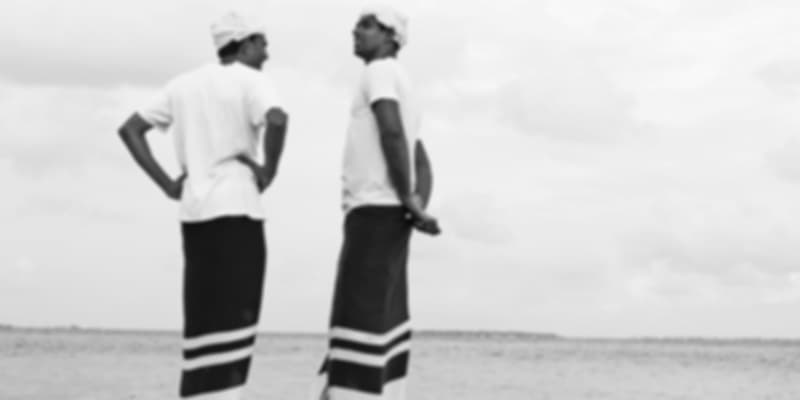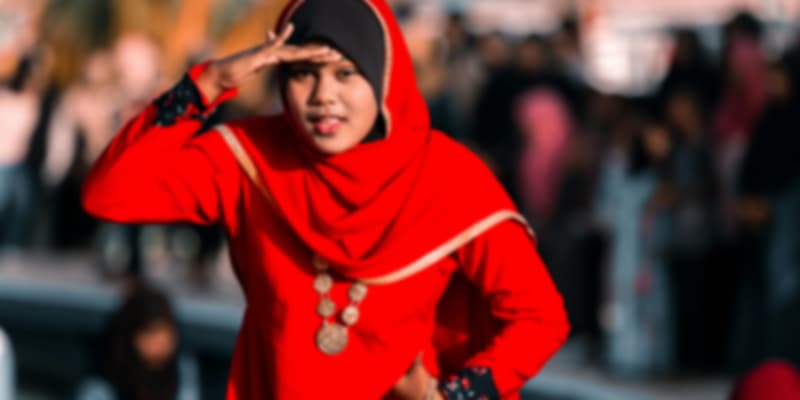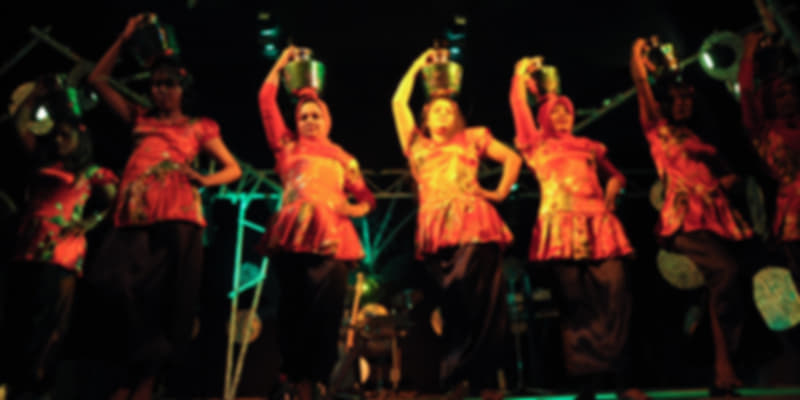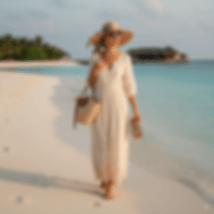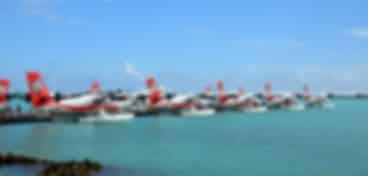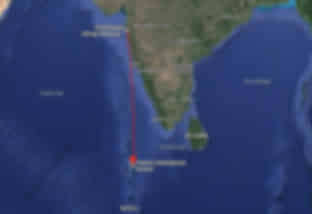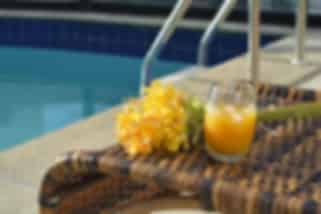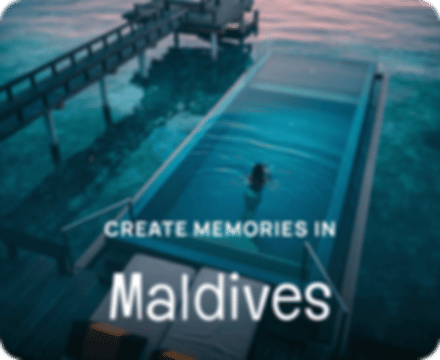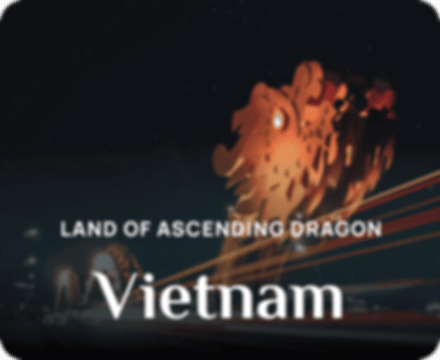Traditional Dresses of Maldives: Complete Guide to Maldivian Clothing & Culture
Author
Raj Kumar Bora
Updated Date
September 19, 2025
Read
7 minutes
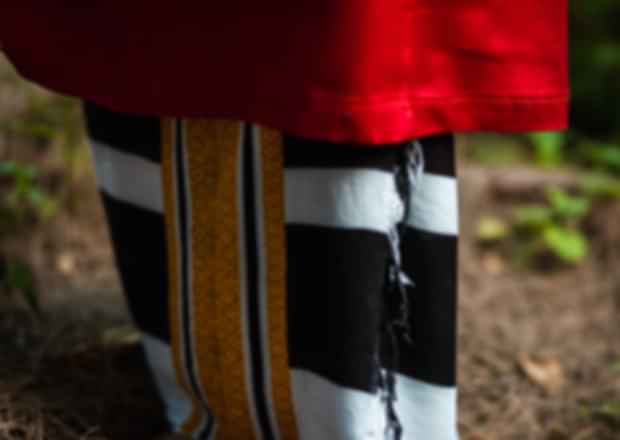
The Maldives is an enchanting destination with white sandy beaches and state-of-the-art resorts, but its cultural heritage remains undiscovered by many tourists. The Maldives has a rich cultural heritage that goes far beyond the postcard images of beaches. The traditional dresses of the Maldives narrate the story of this island’s Islamic heritage, maritime traditions and cultural evolution. Traditional Maldives attire represents more than fashion as it showcases the Maldivian culture at its best. Whether you’re planning to experience local culture or seeking authentic traditional Maldivian souvenirs, understanding these beautiful garments offers insight into the heart of Maldivian identity.
Key Takeaways
- Dhivehi Libaas is the most iconic traditional dress for women, featuring intricate gold and silver Kasabu Viyun embroidery paired with a Feyli underskirt.
- Mundu represents traditional men’s attire – a wraparound cloth in blue or black with white stripes, worn with a white shirt.s
- Traditional Maldivian clothing reflects centuries of Islamic influence and maritime culture, primarily worn during weddings, festivals, and cultural celebrations.
- Tourists can purchase authentic traditional dresses from Male Local Market, Majeedhee Magu, and Chaandanee Magu for $25-100 USD
- Wearing traditional dress respectfully requires understanding cultural etiquette, especially regarding modesty and religious significance.
Historical Background of Traditional Maldivian Attire
The Maldivian traditional dress has developed over the centuries due to the influence of the Islamic religion and the necessities of life on the islands. This led to the introduction of modest clothes with distinctive Maldivian embroidery styles that remain unchanged in the traditional attire to date.
Traditional Men’s Clothing in the Maldives
Mundu: Traditional Male Dress of the Maldives
Mundu represents traditional Maldivian men’s attire. It is a long wraparound cloth featuring unique patterns that carry cultural meanings. You can buy it as a souvenir and create good memories with your loved ones during your Maldives holiday.
Modern Adaptations of Maldivian Men’s Attire
The Maldivian men tend to dress up in simplified versions of traditional clothes when attending cultural events. The Mundu is still widely used during the Independence Day celebrations, religious festivals and traditional wedding ceremonies.
Traditional Women’s Clothing in the Maldives
Dhivehi Libaas: The Iconic Maldivian Dress for Women
Dhivehi Libaas stands as the most recognisable and culturally significant traditional dress of the Maldives. This elegant clothing is embroidered in elaborate gold and silver threadwork that creates stunning geometric and floral patterns. The garment is paired with an underskirt called Feyli.
Dhigu Hedhun: The Maldivian Ceremonial Gown
Dhigu Hedhun symbolises formal occasions and special celebrations in Maldivian culture. This elegant gown symbolises prosperity and joy in Maldivian culture.
Hedhun Buri: Everyday Wear in Maldivian History
Hedhun Buri is one of the traditional dresses of the Maldives, which was worn by young girls and women. However, in modern times, it is worn during cultural performances and heritage festivals. This outfit consists of decorative headbands, a shimmering jacquard blouse and a wraparound skirt.
Religious and Cultural Influences on Maldivian Dresses
- Islamic influence significantly shapes women’s traditional clothing in the Maldives.
- Most women are dressed in a hijab or head cover as a part of their traditional attire, especially when attending a religious or official gathering.
- A burqa is a headscarf and modest robe worn by religious women in the Maldives.
Cultural Significance of Maldivian Traditional Clothing
The Maldivian traditional clothing is significant in terms of maintaining cultural identity. Learning about when and how these garments are worn helps visitors to understand the underlying meaning of these garments.
Weddings and Traditional Celebrations in the Maldives
A Maldivian wedding is a display of the best of traditional dressing.
Brides typically wear elaborate Dhivehi Libaas with the most intricate Kasabu Viyun embroidery. Grooms don their finest Mundu with ceremonial white shirts and traditional caps.
National Holidays and Festivals Showcasing Maldivian Attire
Traditional Maldivian attire can be encountered at Independence Day celebrations, Eid festivals and other national holidays. During these events, cultural performances are commonly performed by dancers and musicians dressed in traditional attire.
These events present excellent opportunities for visitors to take pictures and enjoy the traditional Maldivian clothing.
Where to Buy Traditional Dresses in the Maldives
Shopping for Maldivian Dresses in Male
Male Local Market is the main place to find Maldivian cultural dress. Visitors can choose ready-made traditional dresses sold by local vendors, or tailor-made services to make perfectly-fitted dresses.
Majeedhee Magu is Male’s main shopping street. The shops specialise in traditional clothing alongside modern attire. Traditional outfits are usually priced between 2,200 and 17,700 (380-3,050 MVR).
Chaandanee Magu is another excellent shopping destination that specialises in handicrafts and traditional textiles. Bargaining is welcome and can lead to 15-20 per cent discounts.
Maldives Packages Starting @ ₹78,000
Buying Traditional Maldivian Attire from Local Islands
Island hopping in the Maldives offers the opportunity to discover traditional clothing produced by local artisans. These purchases directly support local communities and offer genuine cultural experiences.
Cultural Etiquette for Wearing Traditional Maldivian Clothing
Respectful Guidelines for Wearing Maldivian Dresses
The traditional dresses of the Maldives are a symbol of the cultural background and religion. Therefore, it requires respectful treatment and should be reserved for cultural events, traditional performances or respectful photography sessions.
One should avoid wearing traditional dress while visiting the beach, enjoying water sports or during casual resort dining.
Photography and Social Media Etiquette
When taking photos of the traditional Maldivian dress, conduct research about Maldivian cultural etiquette to capture photos in a respectful manner.
Always seek permission to take photographs of the local people wearing the traditional Maldives attire.
Social media posts featuring traditional dress should include respectful captions acknowledging the cultural significance of these garments.
Care and Storage of Traditional Maldivian Clothing
Traditional Dresses of the Maldives should be carefully maintained in order to preserve the intricate details.
Conclusion: Embracing Maldivian Heritage Through Traditional Dress
Traditional Dresses of the Maldives offer visitors meaningful connections to this island nation’s rich cultural heritage beyond its famous beaches and luxury resorts. These beautiful Maldivian cultural dresses represent centuries of Islamic influence, maritime traditions and artistic craftsmanship that continue to define Maldivian identity. Whether you choose to purchase authentic traditional dress as a cultural souvenir or simply appreciate the intricate embroidery details of these garments, buying a Maldivian cultural dress during the tour will surely enhance your travel experience. Plan your cultural tour to this historic island nation with Pickyourtrail’s Maldives Holiday Package or Maldives Honeymoon Package to enjoy a hassle-free holiday.
Frequently Asked Questions About Traditional Maldivian Clothing
Can tourists wear traditional Maldivian clothing respectfully?
Yes, tourists can wear traditional Maldivian dress when purchased authentically and worn during appropriate cultural occasions. Avoid wearing traditional clothing to beaches or casual settings, and always treat these garments with cultural respect. Consider attending cultural performances or festivals where traditional dress is welcomed and celebrated.
Where is the best place to buy authentic traditional Maldivian dresses?
Male Local Market, Majeedhee Magu, and Chaandanee Magu offer the most authentic traditional Maldivian clothing with the widest selection. Local island artisans on Maafushi, Guraidhoo, and Thulusdhoo provide handmade alternatives that directly support communities. Expect to pay Rs. 2,200 to Rs. 8,830 (380-1,520 MVR) for quality traditional dresses, depending on embroidery complexity.
What is the cultural significance of Kasabu Viyun embroidery?
Kasabu Viyun represents the pinnacle of Maldivian textile artistry, featuring intricate gold and silver threadwork passed down through generations. These embroidered patterns often incorporate Islamic geometric designs and maritime motifs that reflect Maldivian cultural identity. Master craftswomen spend weeks creating each piece, making Kasabu Viyun embroidery highly valued for its artistic and cultural significance.
When do Maldivian people wear traditional clothing today?
Modern Maldivians primarily wear traditional clothing during weddings, religious festivals like Eid, Independence Day celebrations, and cultural performances. Traditional dress also appears during school cultural days and heritage events that celebrate Maldivian identity. Daily wear has shifted to modern clothing, making traditional dress special occasion attire.
How should I care for traditional Maldivian clothing with embroidery?
Hand-wash traditional Maldivian clothing in cool water using a gentle detergent to protect delicate Kasabu Viyun embroidery. Avoid wringing or twisting embroidered sections. Instead, press water out gently. Air dry away from direct sunlight and store in breathable fabric bags to prevent humidity damage. Professional cleaning may be necessary for heavily embroidered pieces to preserve intricate threadwork.
Recommended articles for you
Discover Packages


Need help in planning?
Talk to our Travel Experts

